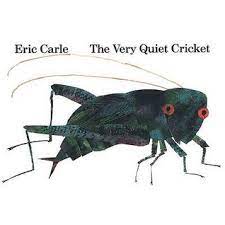One day a tiny cricket is born and meets a big cricket who chirps his welcome. The tiny cricket tries to respond, but there is no sound. The quiet cricket then makes his way into the world, meeting one insect after another, each of whom greets the little cricket with a cheery hello–the hum of a bee, the whirr of a dragonfly, the whisper of a praying mantis. The cricket rubs his wings together each time, but nothing happens, not a sound. Until the day he meets another cricket, a female, and something different happens . . . As children turn the page on this wonderful moment, they are greeted with a surprise–an actual chirp!
This sweet rhyming, repetitive spring and bug themed book can be used in speech therapy to address social/emotional issues like perseverance and believing in yourself. It is also great for predicting, and for targeting /kr/, /s/, and /n/ sounds as well as for describing! Discover more of the speech and language teaching concepts for using The Very Quiet Cricket in speech therapy below:



